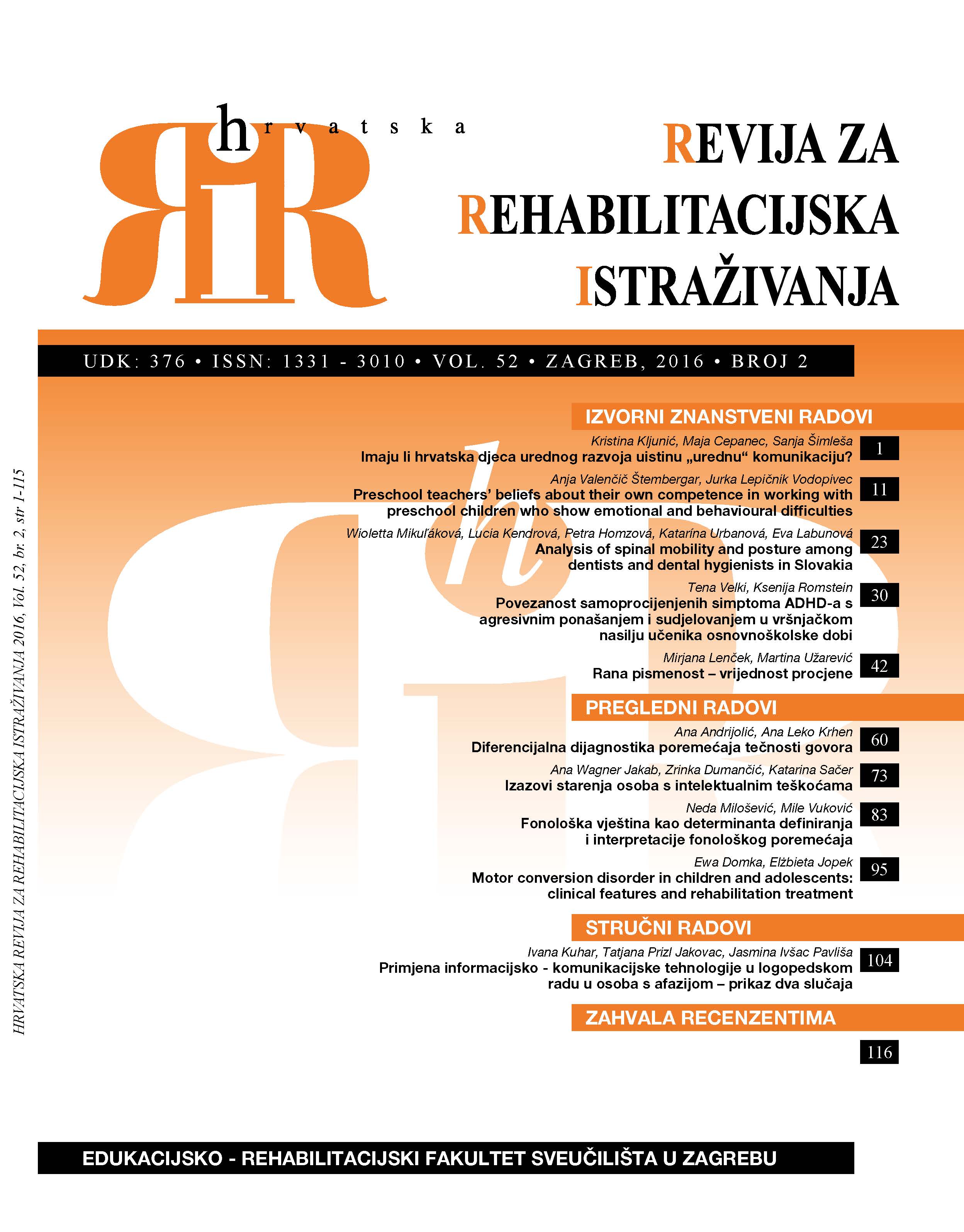Povezanost samoprocijenjenih simptoma ADHD-a s agresivnim ponašanjem i sudjelovanjem u vršnjačkom nasilju učenika osnovnoškolske dobi
The correlation of self-evaluated ADHD symptoms with aggressive behavior and participation in peer violence among children in primary schools
Author(s): Tena Veliki, Ksenija RomsteinSubject(s): Social Sciences, Studies in violence and power, Health and medicine and law
Published by: Sveučilište u Zagrebu, Edukacijsko-rehabilitacijski fakultet
Keywords: aggressive behavior; peer interaction; peer violence; hyperactivity; impulsivity; inattention;
Summary/Abstract: Numerous studies have confi rmed that ADHD correlates with peer violence and aggression. The main goal of this study was to examine the correlation between different self-evaluated symptoms of ADHD (hyperactivity, impulsivity, and inattention) with different aspects of peer violence (physical, verbal, and electronic), and aggressive behavior (reactive and proactive aggression). Overall, 501 pupils enrolled in grades 4, 6, and 8 of primary school participated in this research, of whom 50.7% were boys and 49.3 were girls. Their average age was M=12.72 (sd=1.62). During one class, the pupils completed the Questionnaire on Peer Violence among School Children (Velki & Kuterovac Jagodić, 2012), the Reactive-Proactive Aggression Questionaire (Raine et al., 2006), and the Hyperactivity ImpulsivityInattention scale (Vulić-Prtorić, 2006). A correlation analysis was conducted (Pearson correlation coefficient), while the significance of differences was tested with Fisher’s Z test. The analysis showed a statistically significant correlation between all three forms of peer violence – verbal, physical, and electronic – with all three groups of ADHD symptoms, i.e., impulsivity, hyperactivity, and inattention (r=0.151 – 0.411, p<0.01), as well as with reactive and proactive aggression (r=0.318 – 0.486, p<0.01). A difference in the significance of correlations, depending on the symptoms of ADHD, has been found in the correlation of verbal peer violence and hyperactivity (z=2.20, p<0.05), versus the correlation to inattention (z=1.95, p<0.05), as well as the strong correlation of impulsivity and proactive aggression versus hyperactivity (z=2.42, p<0.05) and inattention (z=2.63, p<0.01). The differences in the correlations of peer violence and aggressive behavior with the symptoms of inattention and hyperactivity were not found. Results have confi rmed previous findings about the correlations of ADHD with peer violence and aggressive behavior, whereas the correlation is especially strong when impulsivity is present. From this research, we can conclude that symptoms of impulsivity represent a risk for developing peer violence and aggressive behavior, and it would be justifi ed to include children who manifest symptoms of impulsivity in programs of peer violence prevention.
Journal: Hrvatska revija za rehabilitacijska istrazivanja
- Issue Year: 52/2016
- Issue No: 2
- Page Range: 30-41
- Page Count: 12
- Language: Croatian

